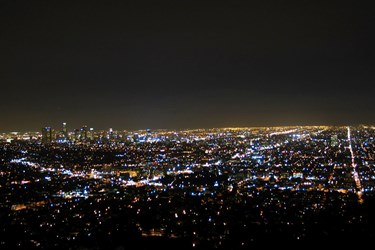California Considers $1 Billion Direct Potable Reuse Plant

By Sara Jerome,
@sarmje

Water officials in California are laying plans for what may become the largest direct potable reuse program in the world.
The Metropolitan Water District of Southern California, a massive water importer that serves Los Angeles, is talking to county sanitation districts about the possibility, the Los Angeles Times reported. Amid population growth and a historic drought, water importing no longer looks like a long-term solution for regional water challenges.
“For more than 80 years, the Metropolitan Water District has paved the way for Southern California's epic growth by securing water from hundreds of miles away. [In late September], the mammoth agency said it wants to invest closer to home in what would be one of the world's largest plants to recycle sewage into drinking water,” the Times reported in a separate piece.
“The agency’s staff presented the framework of a plan to purify and reuse as much as 168,000 acre-feet of water a year – enough to serve about twice that number of households for a year,” the report said.
Similar projects have cost about $1 billion, the Associated Press reported. The water district would need to build a treatment plant, delivery facilities, and clear various regulatory hurdles.
The next step: The agencies are exploring the launch of a “demonstration project” in about 20 months. “There, the treatment processes would be perfected on 1 million gallons of water per day while officials conduct additional studies and develop a financing plan, according to an MWD memo,” the Times reported.
California currently has a major recycling water plant, but it is not a direct potable reuse facility. “So far, there is only one large-scale recycling plant up and running. The Orange County Water District, which serves 2.4 million people, has recycled 70 million gallons a day since 2008. Its groundwater replenishment system was so well received that the district expanded production capacity this spring to 100 million gallons a day,” the San Francisco Chronicle reported.
Toilet-to-tap is barred in California, but direct potable reuse rules in California may change in the coming months, the report said:
It is mostly because of the yuck factor that California does not allow the public to drink recycled water directly out of a treatment plant. Legislation has been introduced to change that, and the California Water Resources Control Board is expected to issue a report in December on the feasibility of such a system. Until direct use is approved, recyclers will have to mix their product with groundwater. That’s what Orange County does.
For more news on how California is responding to drought, visit Water Online’s Water Scarcity Solutions Center.
Image credit: "Los Angeles at Night from the Griffith Observatory," @andrewghayes © 2010, used under an Attribution 2.0 Generic license: http://creativecommons.org/licenses/by/2.0/
